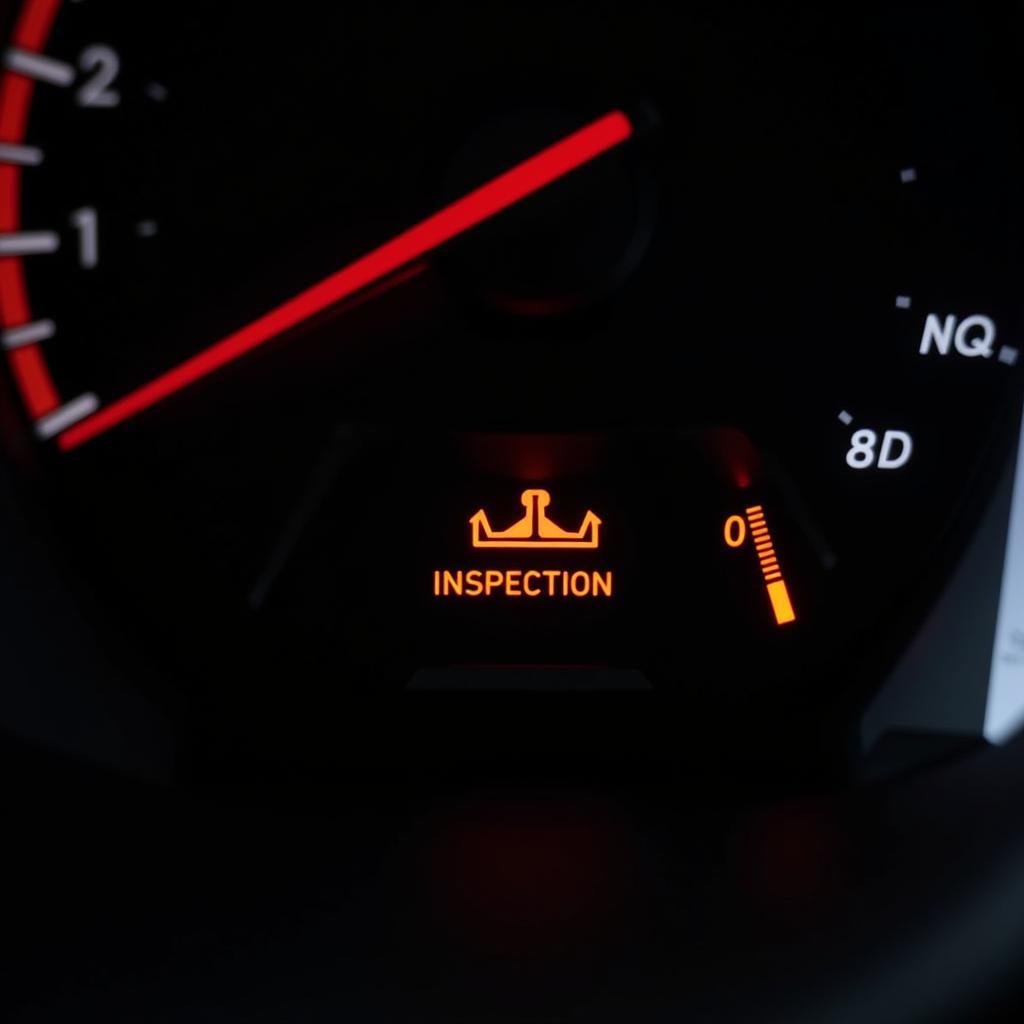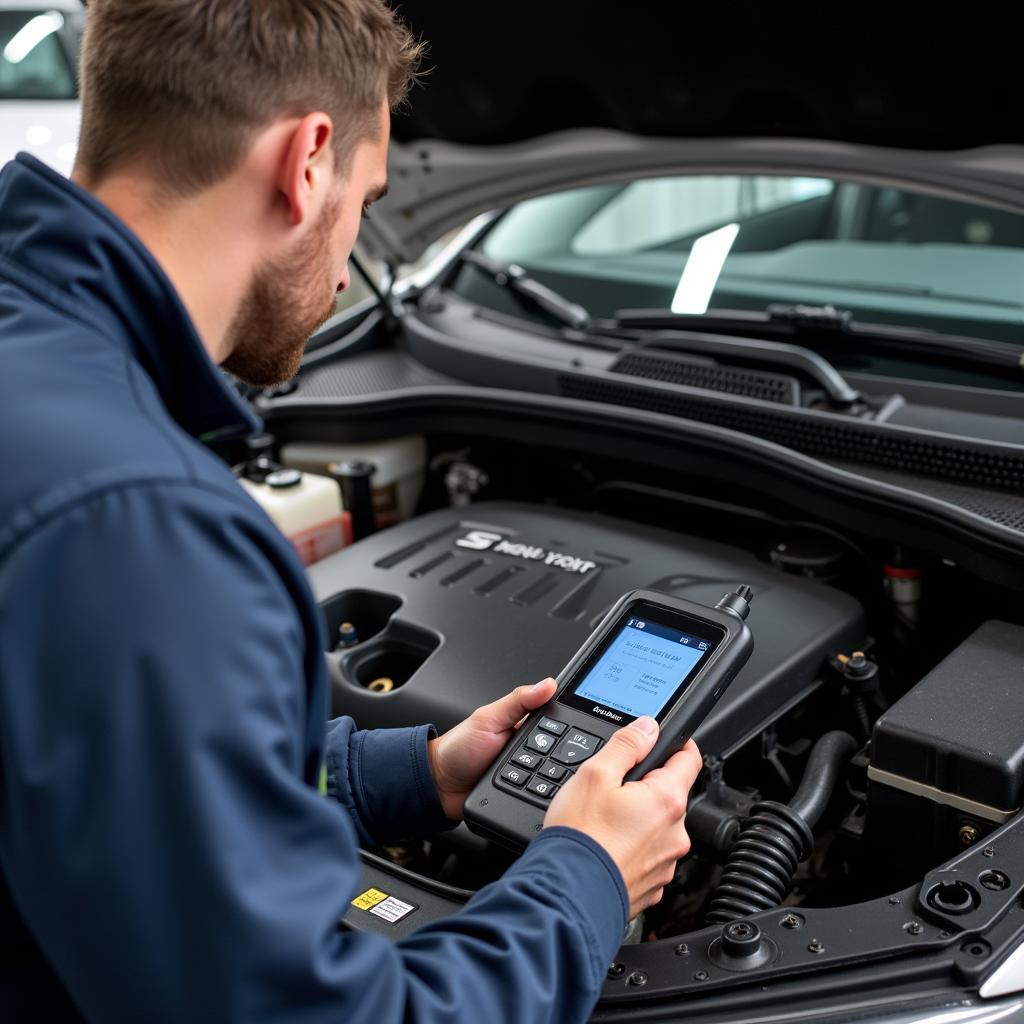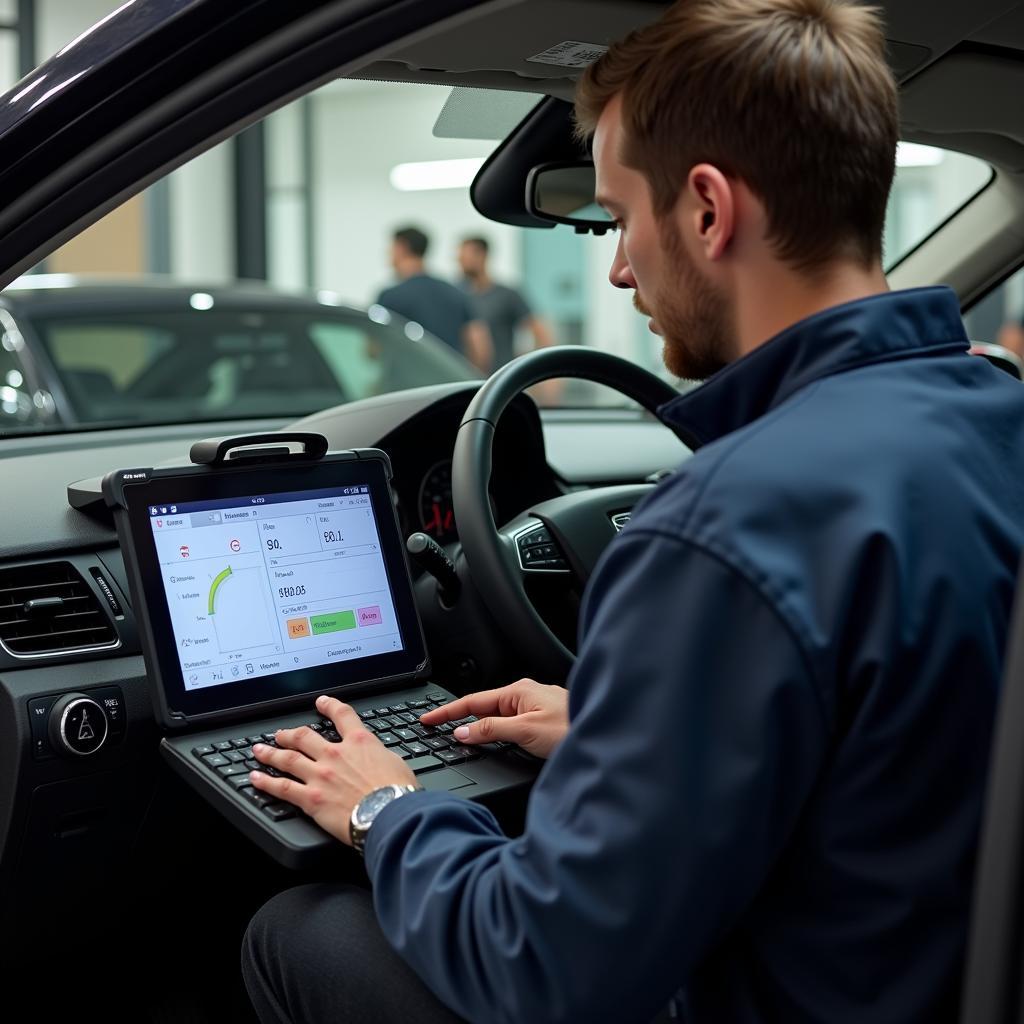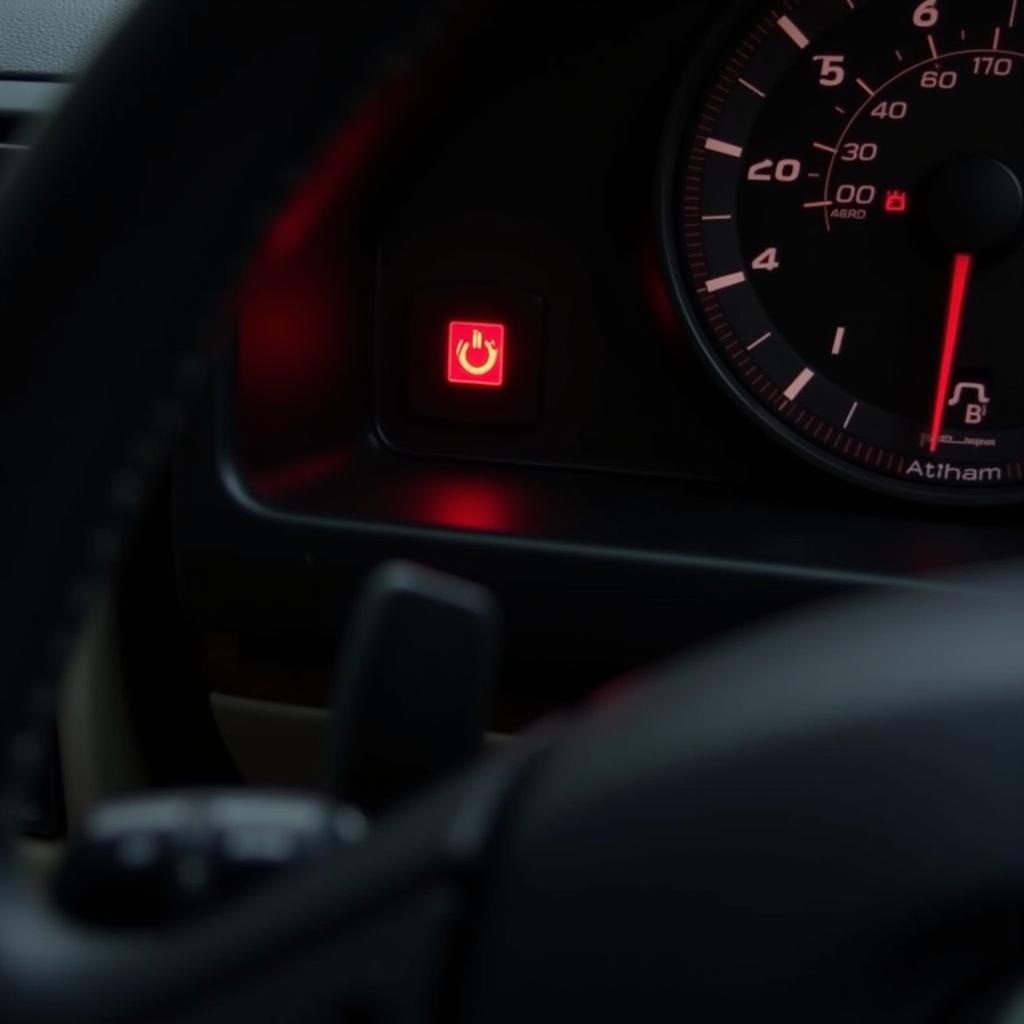The dreaded “Inspection” warning light on your Seat Ibiza dashboard can be a cause for concern. It’s a sign that your car’s onboard computer has detected a potential issue that requires attention. While it might seem daunting, understanding the Seat Ibiza inspection warning is crucial for addressing the problem and ensuring your vehicle runs smoothly. This comprehensive guide will delve into the common causes, troubleshooting tips, and possible solutions to help you tackle the inspection warning like a pro.
Understanding the Seat Ibiza Inspection Warning Light
Unlike specific warning lights that illuminate for brakes, airbags, or engine issues, the inspection warning serves as a general indicator. It activates when your Ibiza’s Engine Control Unit (ECU) detects an irregularity within various systems, such as:
- Engine and Emissions: Issues with spark plugs, ignition coils, fuel injectors, oxygen sensors, catalytic converter, or other emission-related components.
- Transmission: Problems with the transmission control module, solenoids, fluid levels, or gears.
- Braking System: Malfunctions in the ABS, brake fluid levels, brake pad wear sensors, or electronic parking brake.
- Electronic Systems: Faults in the electronic stability control, power steering, lighting system, or other electronic modules.
 Seat Ibiza Dashboard with Inspection Warning Light On
Seat Ibiza Dashboard with Inspection Warning Light On
What to Do When the Inspection Warning Light Comes On
- Don’t Panic: While seeing any warning light can be unsettling, it’s crucial to remain calm. The inspection light doesn’t always indicate a critical problem requiring immediate attention.
- Assess Your Driving Conditions: Consider if you were recently driving in challenging conditions like extreme temperatures, heavy traffic, or rough terrain. These factors can sometimes trigger temporary sensor glitches.
- Check for Other Warning Lights: The inspection warning light might accompany other warning lights on your dashboard. Take note of any additional indicators, as they can provide valuable clues about the specific system affected.
- Consult Your Owner’s Manual: Your Seat Ibiza owner’s manual contains a dedicated section explaining the inspection warning and its potential causes. It may offer preliminary troubleshooting steps or recommend specific actions based on the accompanying warning lights.
- Schedule an Inspection: If the warning light persists or is accompanied by noticeable performance issues, it’s crucial to schedule an inspection with a qualified mechanic specializing in Seat vehicles.
Common Causes of the Seat Ibiza Inspection Warning Light
1. Faulty Oxygen Sensor
Oxygen sensors play a vital role in monitoring the oxygen content in your Ibiza’s exhaust, ensuring optimal engine performance and fuel efficiency. A faulty sensor can disrupt this balance, triggering the inspection warning light.
2. Worn Spark Plugs
Spark plugs are responsible for igniting the air-fuel mixture in the combustion chamber. Worn spark plugs can cause misfires, reduced engine power, and illuminate the inspection warning.
3. Loose Gas Cap
While seemingly trivial, a loose or damaged gas cap can disrupt the fuel system’s pressure and trigger the inspection light. It’s always worth checking your gas cap for a secure seal before seeking professional help.
 Mechanic Inspecting a Seat Ibiza Engine
Mechanic Inspecting a Seat Ibiza Engine
4. Emission System Issues
Problems with the catalytic converter, evaporative emissions system (EVAP), or other emission-related components can trigger the inspection warning light. These issues often lead to increased emissions and require professional attention.
5. Brake System Malfunction
The inspection light can also indicate problems within the braking system. Low brake fluid, worn brake pads, or issues with the electronic parking brake can activate the warning light.
Diagnosing the Inspection Warning Light
Modern vehicles like the Seat Ibiza are equipped with sophisticated onboard diagnostic systems. To pinpoint the exact cause of the inspection warning, a qualified mechanic will typically:
- Connect a Diagnostic Scanner: This specialized tool communicates with the Ibiza’s ECU, reading stored fault codes that pinpoint the problematic system or component.
- Perform a Visual Inspection: A visual check of the engine bay, undercarriage, and other relevant areas helps identify potential issues like leaks, damaged wires, or loose connections.
- Test Individual Components: Depending on the fault codes and visual inspection, the mechanic might test specific components like sensors, actuators, or modules to determine their functionality.
 Seat Ibiza Connected to a Diagnostic Scanner
Seat Ibiza Connected to a Diagnostic Scanner
Remote Diagnostics and Programming for Seat Ibiza
Advancements in automotive technology have paved the way for remote diagnostics and programming. In some cases, qualified technicians can remotely access your Seat Ibiza’s ECU to:
- Retrieve Fault Codes: Analyze stored fault codes to understand the nature of the problem.
- Perform Software Updates: Update the car’s software to address potential glitches or improve system performance.
- Activate/Deactivate Specific Features: Enable or disable certain features remotely, depending on the issue and the vehicle’s capabilities.
It’s important to note that remote diagnostics and programming require specialized equipment and expertise. Always consult a reputable service provider specializing in Seat vehicles to ensure proper procedures and compatibility.
Preventing Future Inspection Warnings
While some issues are unavoidable, proactive maintenance can significantly reduce the chances of encountering the inspection warning light on your Seat Ibiza. Consider the following:
- Adhere to Regular Service Intervals: Follow the manufacturer’s recommended maintenance schedule for oil changes, filter replacements, and other routine checks.
- Address Warning Lights Promptly: Ignoring any warning lights can exacerbate minor issues into major problems.
- Use High-Quality Fuel and Fluids: Using the recommended fuel grade and high-quality fluids can contribute to the longevity and optimal performance of your Ibiza’s systems.
- Inspect Your Vehicle Regularly: Periodically check your tire pressure, brake fluid levels, and look for any signs of leaks or damage under the hood.
Conclusion
The Seat Ibiza inspection warning light serves as a crucial indicator, alerting you to potential issues within your vehicle. While it can be concerning, understanding its meaning, common causes, and troubleshooting steps can empower you to address the problem effectively. By staying proactive with maintenance, addressing warning lights promptly, and seeking professional assistance when needed, you can ensure your Seat Ibiza remains safe and reliable on the road.


